collision
Latest
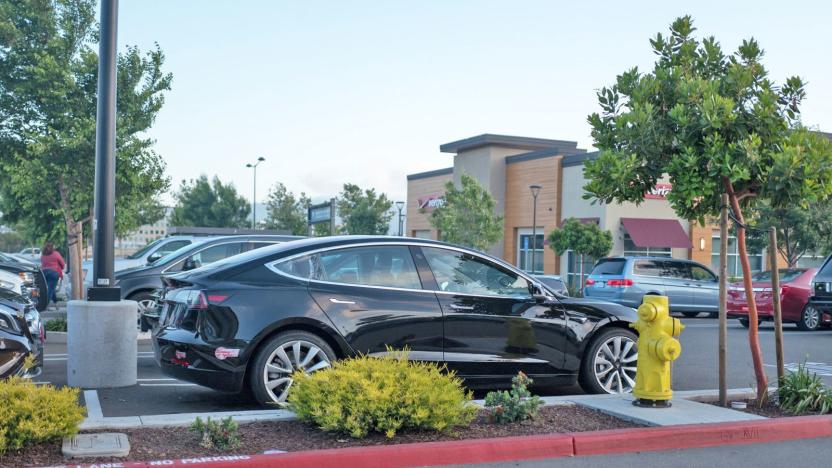
People are struggling to use Tesla's Smart Summon feature safely
Tesla's handy Smart Summon feature was hailed as the next big thing in motoring convenience when it was first announced earlier this year. Press a button and the car comes to you? Brilliant. But as a few Tesla owners have recently shown, there's still a pretty big gap between the way Tesla says the feature should be used, and how people are actually using it.
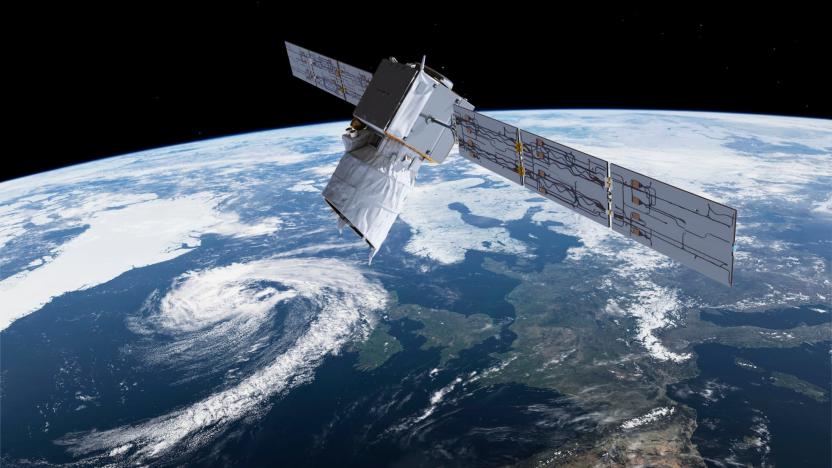
SpaceX wouldn't move its satellite despite collision warning, ESA claims (updated)
There's a high-stakes traffic issue in the space around our planet. The European Space Agency's Aeolus Earth observation satellite had to perform a maneuver to prevent collision with SpaceX's Starlink satellite 44.

Astronomers believe the young Milky Way once swallowed a dwarf galaxy
Astronomers believe they've mapped an important sequence of events that shaped our galaxy 10 billion years ago. In a paper published in Nature Astronomy today, researchers from the Instituto de Astrofisica de Canarias (IAC) share their findings that a dwarf galaxy, Gaia-Enceladus, once collided and merged with the early Milky Way. Their discovery offers a new understanding of how the Milky Way formed.
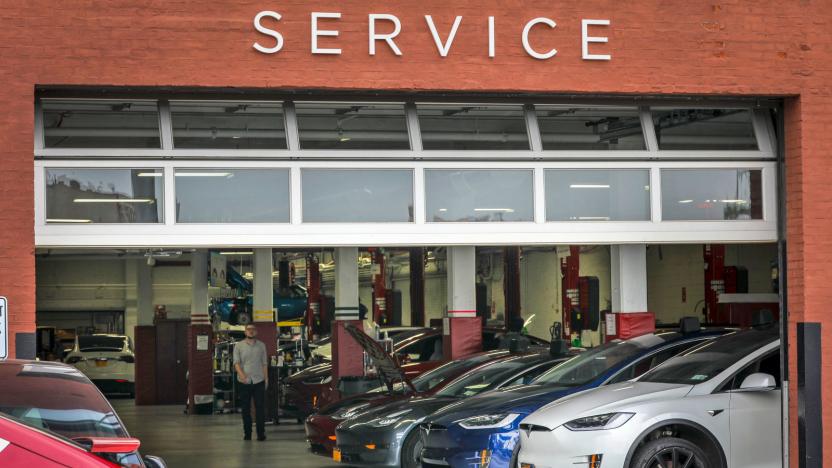
Tesla will perform most collision repairs 'in-house'
As mainstream as Tesla has become, its repair process is still far more drawn out than what you'd expect from a conventional. It's not unheard-of for owners to wait weeks or even months for a working vehicle after a crash. That's about to change, according to Elon Musk. Tesla now plans to conduct most collision-related repairs "in-house" instead of farming them out to third parties, which often have to order parts and often aren't very familiar with Tesla's lineup. There are already some repairs that finish within 24 hours, Musk added, with plans for same-day and even one-hour repairs.
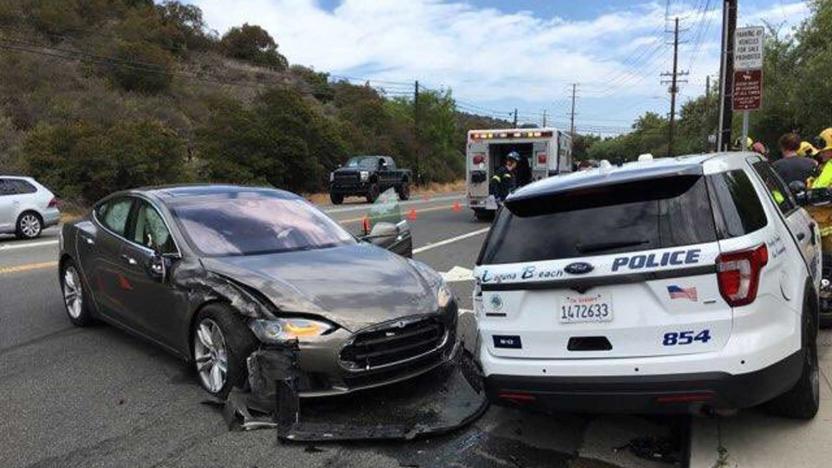
Tesla Model S in Autopilot collides with police SUV
A Model S driver in Laguna Beach has crashed into a parked (and thankfully unoccupied) police SUV while her EV's Autopilot was reportedly engaged, sustaining minor injuries in the process. It's not yet known what the driver was doing at the time of the collision, but the incident is once again raising questions about Tesla's role in educating drivers about its semi-autonomous feature.

GM faces lawsuit over self-driving car collision
Self-driving car manufacturers dread lawsuits over crashes due to questions of liability, and GM is about to learn just how problematic they can be. Oscar Nilsson has sued GM after a December collision between his motorcycle and one of the company's self-driving Chevy Bolts. According to his version of events, he was trailing the Bolt when it started changing lanes. He tried to pass the autonomous car, but it "suddenly" swerved back into his lane, knocking him to the ground and injuring both his neck and shoulder.
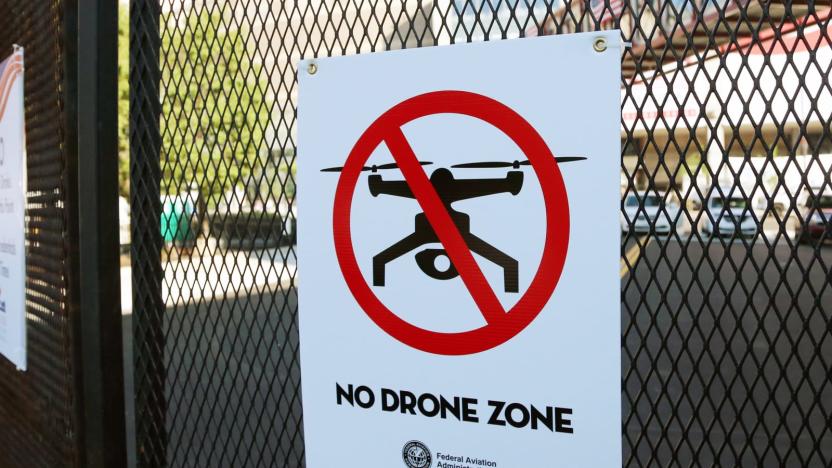
Drone hits a commercial plane for the first time in Canada
A twin-engined commercial prop aircraft has struck a drone for the first time in Canada, says Minister of Transport Marc Garneau. The Skyjet Beech King Air 100 was on approach to Jean Lesage International Airport in Québec City when it hit an unknown type of UAV. Garneau said that the drone was flying at around 1,500 feet, three miles from the airport -- 500 feet above the legal limit. The plane landed safely and sustained only minor damage, but "it could have been a lot more serious," he told the CBC.
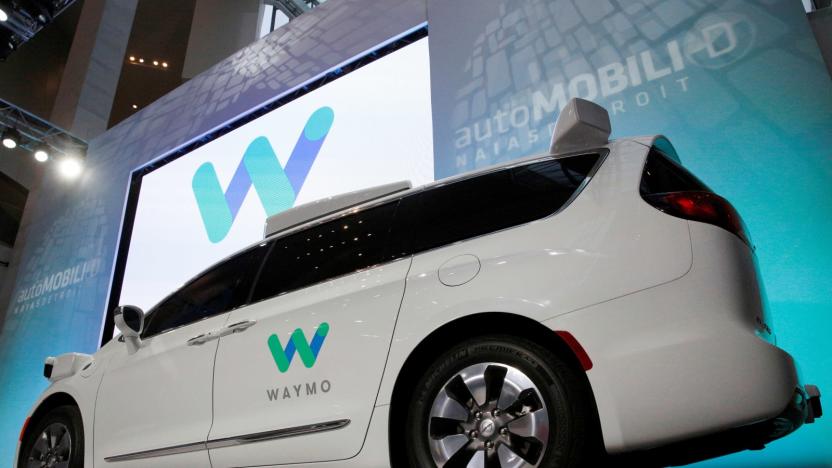
Waymo patents cars that soften to safeguard pedestrians
Self-driving cars are supposed to be safer by nature, as they shouldn't make nearly as many driving errors as humans. However, Waymo might not be willing to take any chances. The Alphabet-owned company recently received a patent for technology that would soften a car's body in the event of a collision with a pedestrian. The feature would change the rigidity of body panels, bumpers and the hood using underlying cables, rods or springs. The moment sensors detect an imminent pedestrian impact, the car would loosen those underpinnings and create a relatively gentle surface that reduces injuries.

ICYMI: The evolution of car safety and a tiny search and rescue robot
Today on In Case You Missed It: While we're all focused on cars becoming autonomous and electric, automakers have also been making important advancements in safety. No where is that more apparent than in a collision between a 1998 Toyota Corolla and its 2015 counterpart conducted by New Zealand's ANCAP. The safety advisory slammed the two vehicles into each other head first. It's impressive to see the difference between 2015 model with its mostly intact cab and the car built in 1998 which is so mangled there's a good chance the person behind the wheel would not have survived.
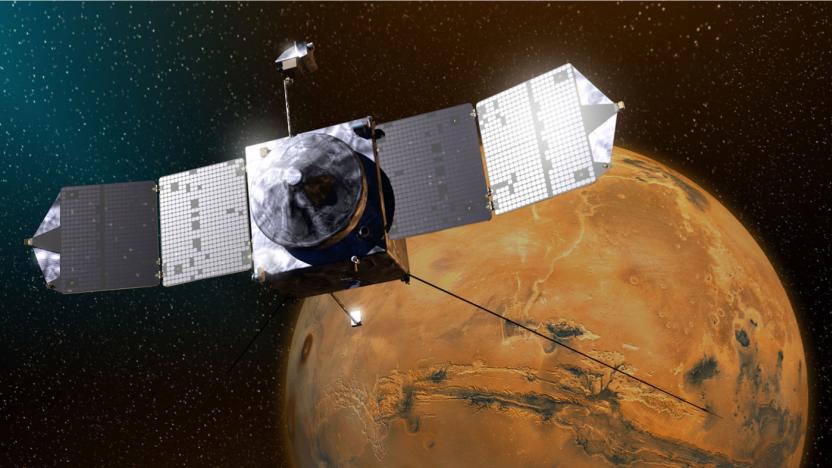
NASA prevents probe's collision with Martian moon Phobos
NASA's MAVEN spacecraft and Phobos would have arrived at an intersection in their orbits within seven seconds of each other on March 6th. Phobos is the larger of the two Martian moons, and MAVEN would most likely crash into it if the space agency left it on its own. Thankfully, the mission's scientists have been keeping a close eye on all the celestial bodies that cross the spacecraft's path. They were able to predict the scenario in advance and were able to perform the spacecraft's first collision avoidance maneuver to prevent the disaster from happening.

Google helps put aging SHA-1 encryption out to pasture
The decades-old SHA-1 encryption used to protect websites is already dying, but a discovery from Google and security researcher CWI Amsterdam could be the killing blow. For the first time, they've found a way to generate a "collision" and create the same critical hash function multiple times. The discovery will make it 100,000 times easier for attackers to slip malicious files into websites or servers than by a brute force attack. That new should help end its use, increasing security around the internet.

The Daily Grind: Should character collision matter?
The first MMO I ever played was Final Fantasy XI, which had something like a collision mechanic. Running into another player would stop my movement for a moment, but after a second both characters would pass through one another. At the time, I didn't understand that this was done to prevent griefing by preventing players from literally blocking off important locations or walling people in, something that was a minor issue anyway because of the game's nonexistent PvP at the time. Many games now available do away with collision altogether, letting players occupy the same space without a thought for logic. On the one hand, this means that crowded spaces are more easily navigated, unlike the fleet area in Star Wars: The Old Republic's, in which movement is a series of desperate jumps as you try to reach anything. On the other hand, there's something to be said for having physical space play a larger role and forcing players to consider the size of what they're running around. So today we ask you: Should character collision matter? Or should we all just run straight through one another without a care in the world? Every morning, the Massively bloggers probe the minds of their readers with deep, thought-provoking questions about that most serious of topics: massively online gaming. We crave your opinions, so grab your caffeinated beverage of choice and chime in on today's Daily Grind!

ITV Player revamp brings ad-free TV rentals, keeps the free catch-ups
As a profit-driven network, ITV has its work cut out in the online streaming world when the BBC's iPlayer looms overhead. How do you compete with a cultural institution? Its solution these days is one of sheer choice: it's launching a publicly available beta of its ITV Player refresh that offers TV show rentals. While viewers will have free, ad-backed viewing for the last month's worth of programming, they'll also have the choice of renting 30-day access to archived episodes at 49p (79 cents) each without the pesky commercials in between. Anyone who just can't get enough Collision can spring for a 90-day rental of a whole series at a lower total price, and the broadcaster is even planning trials of streaming-first episode premieres -- if only we were so forward-thinking in the US. We'd question the wisdom of anyone who really, truly needs an uninterrupted The Only Way is Essex, but at least those who want fodder for water cooler chats can blast through their pseudo-reality TV at a record pace.

Panasonic details radar-based technology that can detect collisions in low light
Collision detection for cars? Yeah, scientists are on that. But whenever we read about concepts like this, the accompanying literature is often curiously light on details pertaining to real-life driving conditions; it's often unclear how well the tech will fare if you dredge it up on a foggy day, or in the middle of torrential storm. But in that press release you see down there, low visibility and poorly lit roads are all Panasonic wants to talk about. The company just unveiled its new crash-avoidance system, which, like other concepts we've seen, uses millimeter-wave radar technology to detect pedestrians and bicyclists. Since humans tend to reflect weaker radar signals than cars, Panasonic has designed a new pulse radar code sequence that allows pedestrians to leave a bigger footprint. It's so effective, the company claims, that it can detect bystanders up to 40 meters (131 feet) away, and will work at night and through rain, fog, snow and blinding sunlight. That all sounds promising, of course, but as with other concepts, it's not clear, when, exactly we'll see this system put to good use in the real world.

China launches high-speed test train capable of 310 mph, shaped like an ancient sword
According to an old "Simpsons" quote, there's nary a thing that can outrun a greased Scotsman. That's no longer the case, as Chinese train manufacturer CSR Corp Ltd. unveiled a 500 km/h (310 mph) high-speed test train over the weekend. The train, which consists of six cars, is shaped to look like an ancient sword, reinforced with carbon fiber, and has a maximum tractive power of 22,800 kilowatts. Similar (if not identical in terms of proposed speeds) projects currently under construction include the 310 mph maglev train planned by Southwest Jiaotong University, the Tokyo to Osaka bullet train planned for 2045 and the proposed 269 mph maglev train from Anaheim to Las Vegas. The test unit is part of China's trillion dollar effort effort to build 13,000 km (8,078 miles) of high-speed rail network by 2012, and about 20,000 km (12,427 miles) by 2020. This new launch comes after a series of high-speed train-related troubles throughout 2011 in which the former Railways Ministry chief, Liu Zhijun, was accused of pocketing $122 million and subsequently terminated from his position; this was followed by a July collision between two high-speed trains in Wenzhou, which killed at least 40 people and injured another 210. Still, the new test train tops out at 310 miles per hour and is shaped like an ancient sword, so past snafus can probably be forgiven.

ESA abandons Russian space probe, hopes it doesn't plummet to earth
Things have gone from bad to worse for the orbit locked Phobos-Grunt space probe, having lost contact with the European Space Agency, the probe faces abandonment and disaster. The soviet star-gazer got stuck in Earth's orbit shortly after launch, stunting its two and a half year jaunt to the Martian moon Phobos. Attempts to send commands that would break the craft loose of the Earth's grip have failed, and the ESA has since given up hope of contacting the probe. The Russians will continue to try and reestablish contact with the probe, hopefully avoiding an expensive disaster. Weighing 13.2 metric tons, most of which is fuel, the probe threatens to return to Earth with a bang, crashing down to terra firma with a toxic payload. It's certainly not been a good couple of months for Euro based space travel. In the meantime let's just hope it doesn't bump into anything else while it's up there, or you might miss the big game.

MIT-created algorithm predicts likelihood of running red lights, places blame where appropriate
The bad news: Math will always judge you. The good news: It'll still be there to judge everyone else. In a recent article published in the IEEE Transactions on Intelligent Transportation Systems, MIT's Professor Jonathan How and three colleagues announced they've created an algorithm that can predict whether an oncoming car is about to run a red light one or two seconds before a possible collision. The algorithm can compute the likelihood of a vehicle running a red light based on its rate of deceleration as it is approaching the intersection with a level of precision down to mere milliseconds. The team, which applied the algorithm to more than 15,000 vehicles during the study, used instruments that monitored vehicle speeds and locations as well as when the lights turned red. When the results were tallied, they found that they were able to correctly predict who would run a red light 85 percent of the time. In other news, MIT is working on a much simpler algorithm capable of predicting when your significant other will break up with you, the formula factoring in at least four behavioral elements from the last season of "Jersey Shore."

Hands-on impressions of The Secret World
Last month, Funcom held a special hands-on event for The Secret World at its Montreal, Canada offices, where we sent freelancer François Blondin to cover all the exciting details. François also got to play the game for several hours, giving us a fresh perspective on what TSW has to offer MMO gamers. In Funcom's upcoming The Secret World, the game's three factions -- Templars, Illuminati and Dragons -- face off, compete, and collaborate (all at the same time!) amidst the nightmarish creatures being revealed throughout the world. But choose your allegiance carefully: Your faction determines your path and special bonuses for the whole game, and faction-switching won't be an option. Join me for a hands-on look at the game's current incarnation!%Gallery-72395%

Toyota's new crash-avoidance technology takes control of the wheel
Crash-avoidance technology in cars is hardly anything new, of course, but Toyota's gone a bit further than most with its latest effort. While complete details are still a bit light (including any word of an actual rollout to vehicles), the new system is said to use a combination of both front and rear cameras, and millimeter wave radar technology to detect pedestrians or obstacles that could lead to a crash. The real kicker, however, is that when the car does detect a possible collision, it actually takes control of the wheel to avoid it instead of just stopping the vehicle. What's more, that's just one new safety measure that Toyota recently showed off to reporters in Tokyo -- it's also working on things like a pop-up hood that could provide some additional protection in the event of a crash, and a steering wheel that can measure the driver's heartbeat and avoid a crash if they suffer a heart attack.

Continental readies stereo camera system for 'seeing' cars
The idea of cars preventing accidents before they happen isn't novel, but at the end of the day, collision detection systems are only as smart as the information being fed to them. That's the ethos behind Continental's new stereo camera system, which spots people, pets, and other objects in a vehicle's path, and measures their height, distance from the vehicle, and how they might be moving. This rig, which will be just another part of Continental's ContiGuard safety system, uses the difference in the lenses' optical paths to make these calculations -- so long as those obstacles are 20 to 30 meters (66 to 98 feet) away. The company also says the cameras are sharp enough to detect partially obscured objects, and claims accuracy within 20 to 30 centimeters (8 to 12 inches). No word on when it will be ready to ship seeing cars, though if the press release is any indication, German drivers are likely to get their test drive first.












